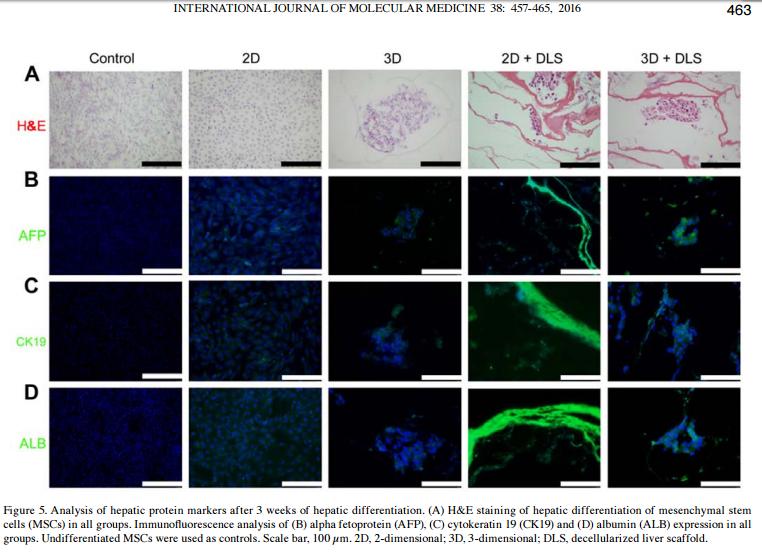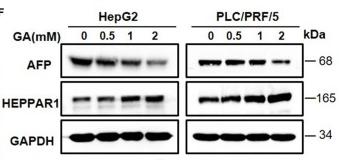AFP Antibody - #AF5134
| Product: | AFP Antibody |
| Catalog: | AF5134 |
| Description: | Rabbit polyclonal antibody to AFP |
| Application: | WB IHC |
| Reactivity: | Human, Mouse, Rat |
| Prediction: | Pig, Bovine, Horse, Sheep, Rabbit, Dog |
| Mol.Wt.: | 62-65 kDa; 69kD(Calculated). |
| Uniprot: | P02771 |
| RRID: | AB_2837620 |
Related Downloads
Protocols
Product Info
*The optimal dilutions should be determined by the end user.
*Tips:
WB: For western blot detection of denatured protein samples. IHC: For immunohistochemical detection of paraffin sections (IHC-p) or frozen sections (IHC-f) of tissue samples. IF/ICC: For immunofluorescence detection of cell samples. ELISA(peptide): For ELISA detection of antigenic peptide.
Cite Format: Affinity Biosciences Cat# AF5134, RRID:AB_2837620.
Fold/Unfold
Afp; AFPD; Alpha fetoglobulin; Alpha fetoprotein; Alpha fetoprotein precursor; Alpha-1-fetoprotein; Alpha-fetoglobulin; Alpha-fetoprotein; alpha-fetoprotein, Hereditary persistence of, included; FETA; FETA_HUMAN; Hereditary persistence of alpha fetoprotein; HPAFP;
Immunogens
- P02771 FETA_HUMAN:
- Protein BLAST With
- NCBI/
- ExPASy/
- Uniprot
MKWVESIFLIFLLNFTESRTLHRNEYGIASILDSYQCTAEISLADLATIFFAQFVQEATYKEVSKMVKDALTAIEKPTGDEQSSGCLENQLPAFLEELCHEKEILEKYGHSDCCSQSEEGRHNCFLAHKKPTPASIPLFQVPEPVTSCEAYEEDRETFMNKFIYEIARRHPFLYAPTILLWAARYDKIIPSCCKAENAVECFQTKAATVTKELRESSLLNQHACAVMKNFGTRTFQAITVTKLSQKFTKVNFTEIQKLVLDVAHVHEHCCRGDVLDCLQDGEKIMSYICSQQDTLSNKITECCKLTTLERGQCIIHAENDEKPEGLSPNLNRFLGDRDFNQFSSGEKNIFLASFVHEYSRRHPQLAVSVILRVAKGYQELLEKCFQTENPLECQDKGEEELQKYIQESQALAKRSCGLFQKLGEYYLQNAFLVAYTKKAPQLTSSELMAITRKMAATAATCCQLSEDKLLACGEGAADIIIGHLCIRHEMTPVNPGVGQCCTSSYANRRPCFSSLVVDETYVPPAFSDDKFIFHKDLCQAQGVALQTMKQEFLINLVKQKPQITEEQLEAVIADFSGLLEKCCQGQEQEVCFAEEGQKLISKTRAALGV
Predictions
Score>80(red) has high confidence and is suggested to be used for WB detection. *The prediction model is mainly based on the alignment of immunogen sequences, the results are for reference only, not as the basis of quality assurance.
High(score>80) Medium(80>score>50) Low(score<50) No confidence
PTMs - P02771 As Substrate
| Site | PTM Type | Enzyme | Source |
|---|---|---|---|
| S111 | Phosphorylation | Uniprot | |
| S115 | Phosphorylation | Uniprot | |
| S117 | Phosphorylation | Uniprot | |
| T248 | Phosphorylation | Uniprot | |
| S344 | Phosphorylation | Uniprot | |
| S368 | Phosphorylation | Uniprot | |
| K413 | Acetylation | Uniprot | |
| S415 | Phosphorylation | Uniprot | |
| S444 | Phosphorylation | Uniprot | |
| S445 | Phosphorylation | Uniprot |
Research Backgrounds
Binds copper, nickel, and fatty acids as well as, and bilirubin less well than, serum albumin. Only a small percentage (less than 2%) of the human AFP shows estrogen-binding properties.
Independent studies suggest heterogeneity of the N-terminal sequence of the mature protein and of the cleavage site of the signal sequence.
Sulfated.
Secreted.
Plasma. Synthesized by the fetal liver and yolk sac.
Dimeric and trimeric forms have been found in addition to the monomeric form.
Belongs to the ALB/AFP/VDB family.
Research Fields
· Environmental Information Processing > Signal transduction > Hippo signaling pathway. (View pathway)
References
Application: IHC Species: Rat Sample: liver tissue
Application: IF/ICC Species: rat Sample:
Application: WB Species: Mice Sample: hepatic cancer cells
Application: IHC Species: Mice Sample: tumors tissue
Application: WB Species: mouse Sample: Liver
Application: IF/ICC Species: Mouse Sample:
Restrictive clause
Affinity Biosciences tests all products strictly. Citations are provided as a resource for additional applications that have not been validated by Affinity Biosciences. Please choose the appropriate format for each application and consult Materials and Methods sections for additional details about the use of any product in these publications.
For Research Use Only.
Not for use in diagnostic or therapeutic procedures. Not for resale. Not for distribution without written consent. Affinity Biosciences will not be held responsible for patent infringement or other violations that may occur with the use of our products. Affinity Biosciences, Affinity Biosciences Logo and all other trademarks are the property of Affinity Biosciences LTD.






